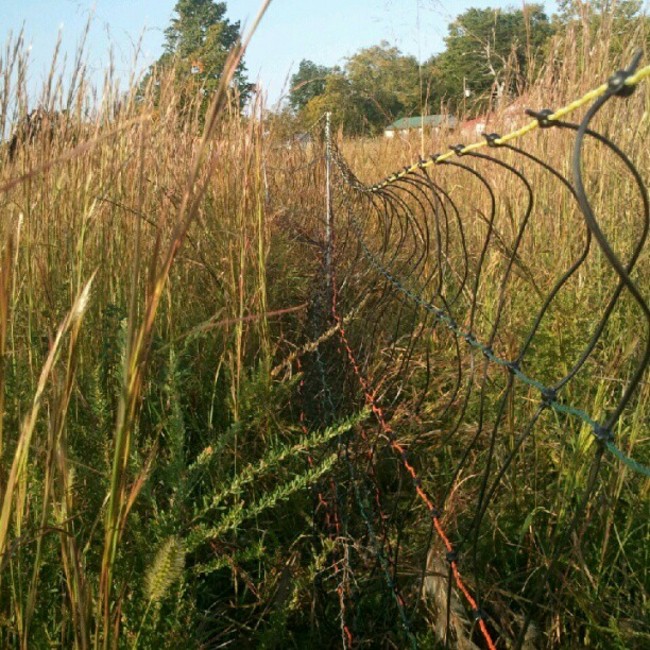Fencing is what I spend the most time doing (and thinking about) on the farm. That's probably why I bore our readers with posts about fencing so frequently. My time is split between so many different things that saying one thing dominates another is hard to do, but fencing is a clear standout. So saddle-up for another fencing thriller: Electro-Netting vs. Polywire.
Since we rotationally graze the goats fencing is a constant topic of interest. It seems like I change how we fence the goats every few weeks. If we just had a single grazing area, or even just a few grazing areas, it wouldn't be such a big deal. Put up some posts, put up some fence, and then you're done. That's how 99.9% of goat farmers do it, and I can see why. Moving the goats every 3-7 days is a chore and everyone knows that chores aren't fun. However, I don't mind it. In fact, I enjoy moving the goats.
Why? Because the goats love it, and happy goats are the whole point of what we're doing. Happy goats = happy Scrapple. At least once or twice per week I get to see the joy on the goat's faces as they enter the new paddock and run around scrambling to find the best spots with the best forage. Over the subsequent days they enjoy their feast and when it looks like they're just about done I move them to a brand new spot. It's the same joy a chef must have feeding his diners.
It's also more cost-effective (lower feed costs), better for the environment (forage recovery periods, nutrient cycling, reduced carbon emissions, etc), better for the health of the goats (grain destroys proper rumen function), and better for the consumer (milk from organic, pasture-based diets is nutritionally superior to grain-fed, confinement based diets).

